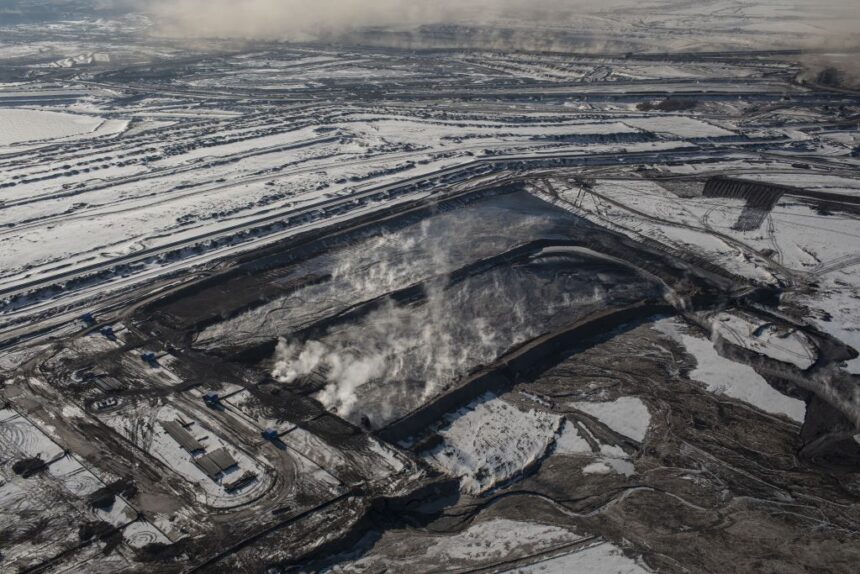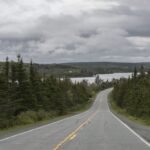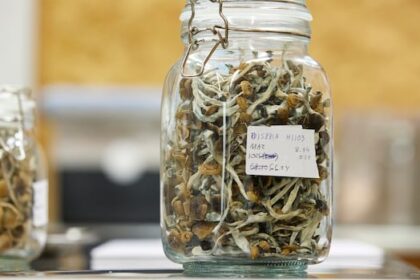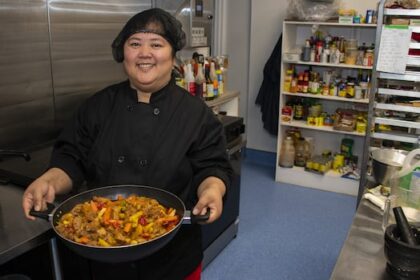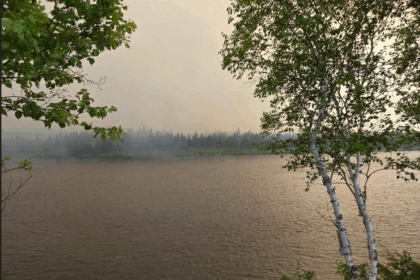Seven months after the Liberal Party vowed to “immediately introduce and pass legislation” affirming the right of First Nations to clean drinking water, Prime Minister Mark Carney’s government says they’re still working on it. This comes as First Nations leaders call on the government to better protect the health of their communities from the threat of toxic waste in the Alberta oilsands. The Alberta government is looking closely at recommendations made in September to speed up the creation of standards, so oilsands companies can treat and release their giant reservoirs of wastewater, called tailings ponds, into the Athabasca River. The oil and gas industry has been asking for permission to release the treated wastewater. Alberta Premier Danielle Smith has given Environment Minister Rebecca Schulz a mandate to come up with a plan for the reservoirs, which as of 2024 have grown to 1.5 trillion litres in volume, covering an area larger than the city of Vancouver. Several First Nations communities downstream of the oilsands rely on the river for drinking water and to support the ecosystem that produces their food. They are against treating and releasing the wastewater into their watershed. “The technology for treating these oil tailings is unproven and cannot guarantee that the water would be safe for my people to drink,” Mikisew Cree First Nation Chief Billy-Joe Tuccaro said during a Nov. 3 press conference in Ottawa. The national chief of the Assembly of First Nations asked the federal government this month to reintroduce a Trudeau-era bill called the First Nations Clean Water Act. The bill, meant to establish legal pathways to protect drinking water sources flowing into First Nation territory, died when former Prime Minister Justin Trudeau prorogued Parliament in early 2025 right before leaving office. Indigenous Services Minister Mandy Gull-Masty, shown on Parliament Hill Nov. 5, said she’s working carefully on new drinking water legislation to make sure it “truly reflects the needs and priorities of First Nations communities,” some of which have complained about a Trudeau-era clean water bill. Photo: Adrian Wyld / The Canadian Press Indigenous Services Minister Mandy Gull-Masty told The Narwhal in a statement she has been taking time to get the details right. She said ensuring safe drinking water for First Nations communities is a “top priority” for the government. “I take this issue very seriously and hope to have more to say very soon,” Gull-Masty said. “We are working carefully to make sure the new legislation is strong, effective and truly reflects the needs and priorities of First Nations communities.” Some First Nations leaders opposed the water bill when it was first debated in Parliament, saying it doesn’t go far enough to protect Treaty Rights, or guard against toxic industrial byproducts, and have criticized the national chief for pushing the bill despite their concerns. Mikisew Cree First Nation is still opposed to its reintroduction. ‘Doing nothing’ is not sustainable: Alberta government Oilsands mining processes need huge amounts of water. Extracting the petroleum substance bitumen creates toxic byproducts that are stored in tailings reservoirs. Currently, oilsands operations have no federal authorization to release any wastewater into any natural water bodies. Schulz has said “doing nothing” while the tailings keep on swelling in size “is not a sustainable long-term approach.” In addition to being toxic, the tailings are dangerous to wildlife, like in 2022 when hundreds of birds died from contaminated water at one site owned by Canadian Natural Resources Limited. Mikisew Cree First Nation, residing on the shores of Lake Athabasca, is skeptical of the idea after spending years sounding the alarm about the cancer crisis it says it’s dealing with. The community suspects its higher-than-average rates of some forms of cancer are tied to industrial activity on its traditional territory. The latest public data available from Alberta Health Services is from 2014 and showed higher-than-expected instances of cervical cancer and biliary tract cancer in the community. The community’s health concerns were heightened, Chief Tuccaro said, when wastewater leaked from an Imperial Oil oilsands site in 2022 and went unreported to the public for nine months. “Adding yet another significant, cumulative effect to an already fragile system is unacceptable,” he said. “We continue to work with the federal government to explore the alternatives of treat and release, and we encourage them to continue that work to find a solution that keeps our community safe.” Environment and Climate Change Canada has been working with Health Canada and nine Indigenous communities to assess the need for regulations overseeing treated oilsands mining waste, including exploring how to manage oilsands tailings, a spokesperson told The Narwhal. The government published a paper early this year “developed collaboratively” with the group that discussed alternatives to treat-and-release and their potential benefits and risks. The federal department expects to publish a draft regulatory framework by the end of next March — and then carry out more analysis of potential impacts to Indigenous Rights and other concerns. The group will then make final recommendations to Environment and Climate Change Minister Julie Dabrusin. First Nations leaders have also long asked the federal government to complete a comprehensive study of health impacts in the oilsands region. In 2024, after decades of concern, the federal government announced it would spend $12 million over ten years to study the “impacts of the oilsands on community members’ health.” Chief Tuccaro was joined by Treaty 8 First Nations of Alberta Grand Chief Trevor Mercredi, who said there are solutions available that could reduce the toxic tailings reservoirs — but they were considered expensive. He didn’t give examples, but one potential solution that involves drying the tailings out so they become stackable “cakes,” for instance, requires high upfront and operating costs. Mercredi argued the price shouldn’t matter. “If it increases the cost of a barrel of oil by $2 a barrel, then it has to be looked at. There is no price for the health of our people,” he said. “We understand that Canada’s in a rough place right now, and we need development for a lot of this industry. Nobody up here is against any type of development or industry, but what we are against is the poisoning of our lands for many generations.” Assembly of First Nations National Chief Cindy Woodhouse Nepinak also joined the two chiefs, and called on Carney to work with Treaty 8 First Nations and others on the issue of safe drinking water. “Water sustains not just our bodies, but our spirits, our traditions, our way of life and our economy. First Nations are united in the belief that water is a fundamental human right,” she said. Assembly of First Nations National Chief Cindy Woodhouse Nepinak, right, shown in Toronto in June, wants to see the Carney government reintroduce the First Nations Clean Water Act, but the chiefs of Mikisew Cree First Nation and Sturgeon Lake Cree Nation have opposed that bill. Photo: Sid Naidu / The Narwhal Canada’s previously proposed clean water bill wasn’t the answer for everyone In voicing concern about water protection, National Chief Woodhouse Nepinak called on Carney to “honour his promise during the election and reintroduce the First Nations Clean Water Act this month. It should have been done by now.” During the 2025 spring election, the Liberal Party platform said they would “immediately introduce and pass legislation affirming that First Nations have a human right to clean drinking water.” In June, provincial environment ministers in Ontario and Alberta called on the Carney government to abandon that plan, saying they feared it would “undermine competitiveness” and “delay project development.” Despite the provincial pressure, Gull-Masty said over the summer the federal government was still planning to table a First Nations water bill “this fall.” As of Nov. 13, no such bill had been introduced. The bill isn’t the answer for everyone. When a parliamentary committee studied it last year, Chief Tuccaro appeared as a witness and said he was in “total opposition” to it because of the powers it could hand Alberta. Chief Sheldon Sunshine of Sturgeon Lake Cree Nation, in Treaty 8 territory, had also told the committee in October “this bill does not meet our needs or expectations.” He said it didn’t meaningfully incorporate inherent and Treaty Rights to water. Asked whether Mikisew Cree First Nation still opposes the bill, even though the national chief was calling for its reintroduction, public relations director Tanya Adams said the nation’s position remains the same. “The national chief stood with us to support our fight against the treat and release of toxic tailings into our water. We thank her for that. Unfortunately, she took this opportunity to reiterate the Assembly of First Nations executive’s support for Bill C-61 [the First Nations Clean Water Act] — something we have opposed and continue to oppose,” Adams said. Adams said the bill would create “two tiers of drinking water guidelines.” The bill would establish standards for drinking water on First Nation lands as meeting the level of quality for either federal guidelines, or some other standards “in place in the province or territory where the First Nation lands are located.” It also makes a distinction between water and “source water,” or the untreated fresh water that becomes drinking water, and allows the federal government to enter into agreements with provinces with respect to protecting it. Mikisew Cree First Nation is worried these kinds of definitions surrender control over water to Alberta, while Canada’s constitution says the federal government has jurisdiction over navigable waters. “This legislation will do nothing for our nation on the issue of toxic tailings,” Adams said, calling it “anti-treaty.” She said the First Nation’s position was shared by many chiefs and nations across Canada. A request for comment sent to the national chief’s office was not returned by publication time. The Carney government’s first budget, released this month, does propose $2.3 billion over three years to renew the First Nations Water and Wastewater Enhanced Program, maintaining about 800 projects. But a steering committee for Treaty 6, 7 and 8 territories said Nov. 5 that the funding for First Nations was “dramatically insufficient” to address infrastructure gaps across Alberta, especially for clean water. Chief Troy Knowlton of the Piikani Nation near the Alberta-Montana border, called it “a small drop in the giant bucket that Canada created.” Recent Posts For Nova Scotia, offshore wind could be an economic boon — with unknown environmental impacts Nov. 17, 2025 11 min. read As the federal government considers fast-tracking Wind West Atlantic Energy, residents hope for economic transformation,… Alberta wants to release treated oilsands waste into the Athabasca River. Mikisew Cree First Nation says it’s ‘unacceptable’ Nov. 17, 2025 8 min. read Prime Minister Mark Carney promised a clean drinking water law for Indigenous communities, but it… ‘Whiplash’ and ‘scar tissue’: conservation authorities grapple with Ontario’s most dramatic overhaul yet Nov. 15, 2025 11 min. read Nearly 80 years after their creation, the Doug Ford government is reducing the unique environmental…
Alberta wants to release treated oilsands waste into the Athabasca River. Mikisew Cree First Nation says its unacceptable
